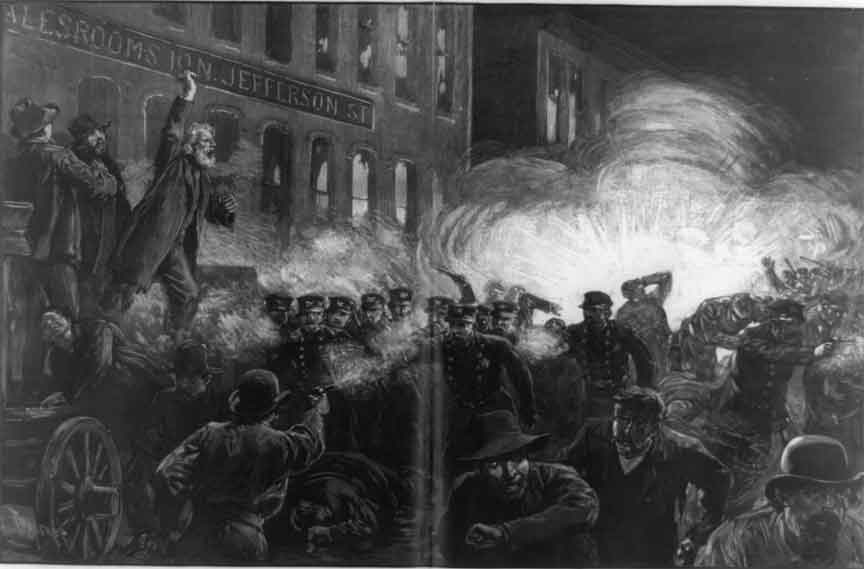Haymarket Bombing 1886

In the aftermath of the Civil War the United States became more industrialized and more urbanized there was growing unrest with the long work days, and poor working conditions that the average worker had to endure. Chicago was a rapidly growing manufacturing center where thousands of immigrants worked. The average factory worker was earring $1.50 a day ( $40 in 2016 dollars) for a ten hour day and had to work six days a week. Chicago became a center of Union organizing. One of the main goals of the Union movement was to achieve an eight-hour day. May 1st was the target date to achieve that goal, which was not obtained. On May 1st strikes were held throughout the United States. Strikes continued throughout the country and those strikes led to violence on May 3 (1886) when there was a confrontation at the McCormick Harvesting Machine plant during which the police fired on the workers and two were killed. The next day workers called for a demonstration at Haymarket Square. A crowd of between 600 - 3,000 gathered at Haymarket Square, the rally was peaceful. At the end of the rally police entered the square and demanded that those in the square disperse. As the police entered a home made bomb was thrown at the police, killing one and injuring six others. Shots were soon fired. It’s not clear who fired at who but by the end of evening seven policeman were dead as were 4 demonstrators. Many more were wounded.
Public opinion immediately turned against the Union organizers and eight people were arrested all involved in the anarchist movement. They were all charged with participation in a conspiracy, and convicted after what would be considered a show trial. Seven were sentenced to death and one to life in prison. The governor commuted two of the sentences to life in prison and a third committed suicide in prison. On November 11, 1887 the four remaining prisoners Engel, Fischer, Parsons and Spies were hung. None of those hung had actually threw the bomb and to this day it’s not known who threw the bomb.
 >
>